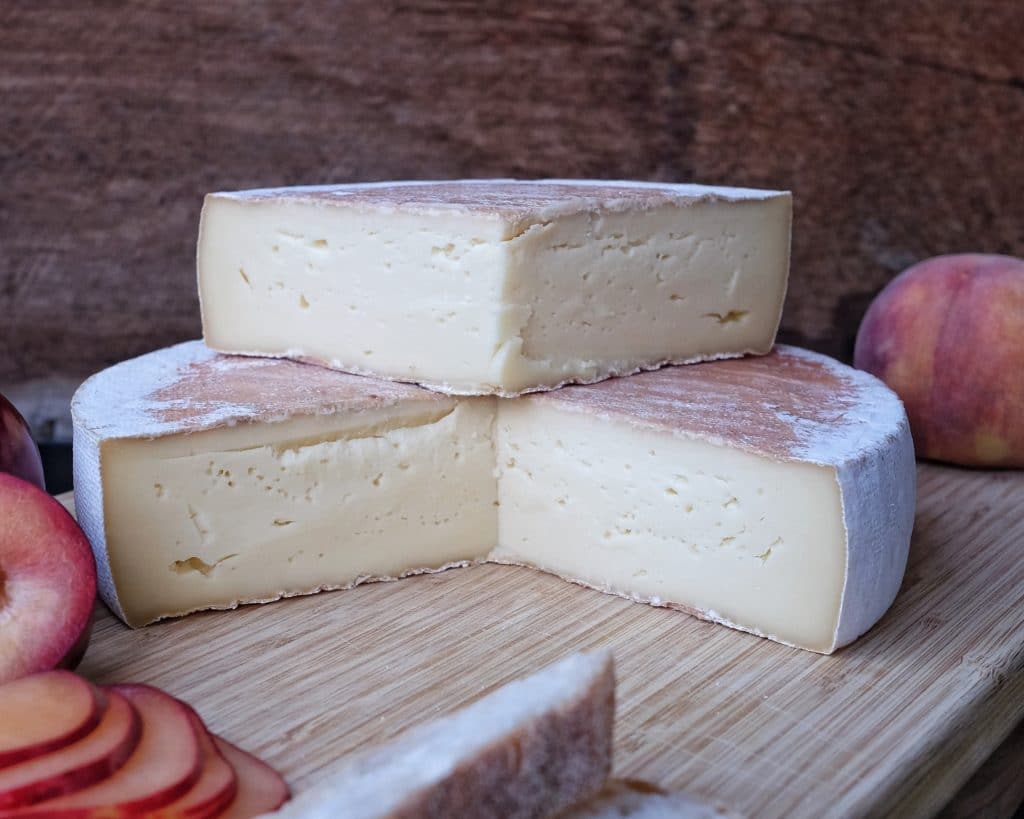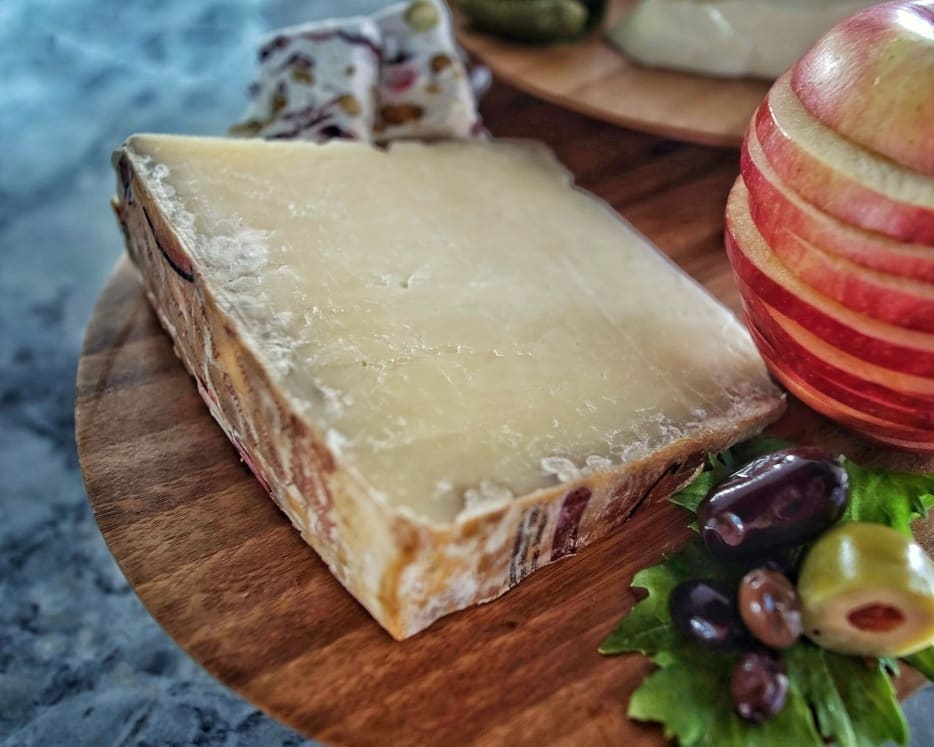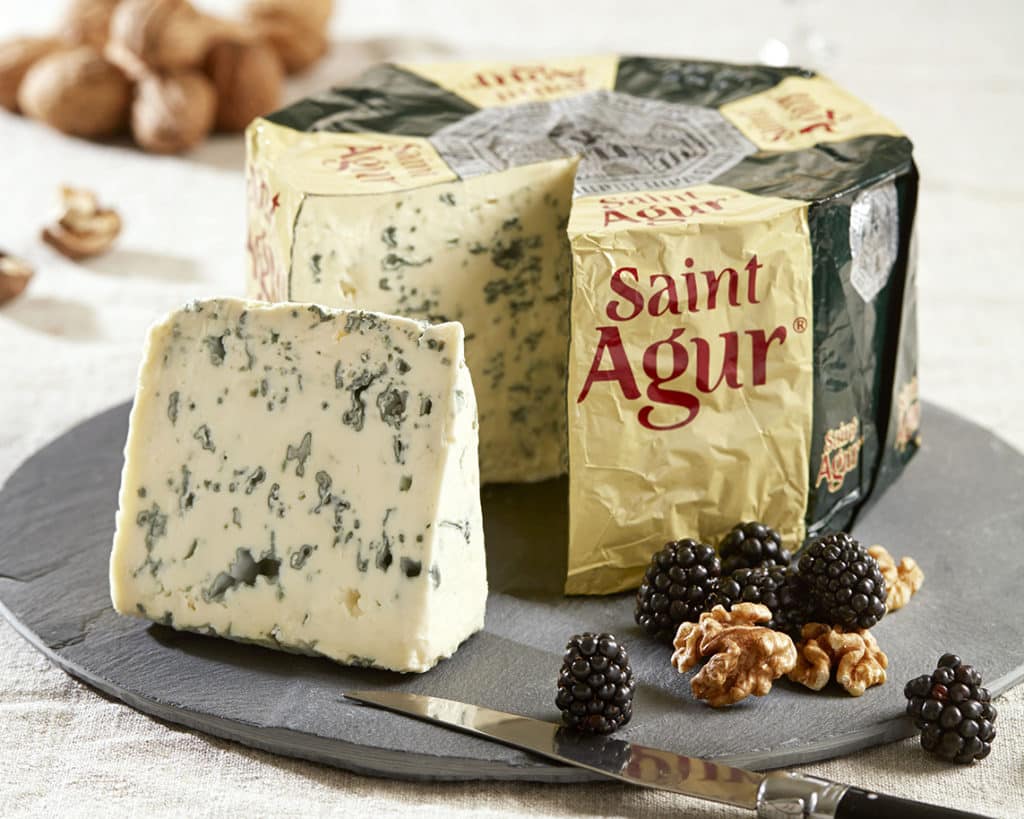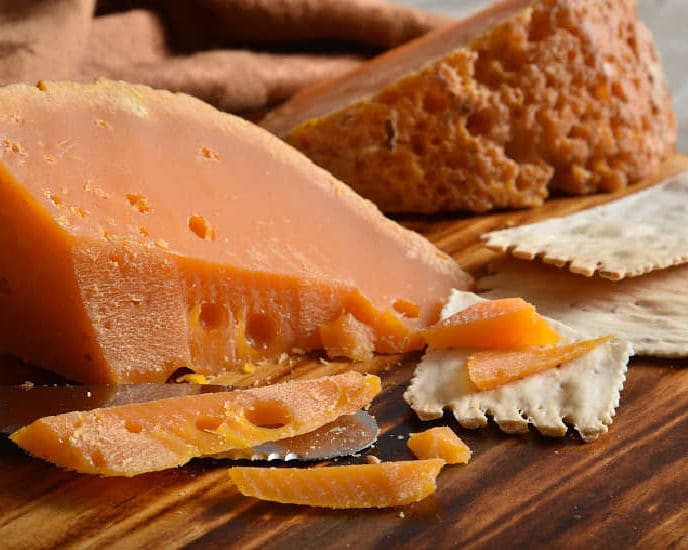Salers cheese is a delicious and flavourful cheese that has been enjoyed for generations. Made from the milk of Salers cows, the cheese has a rich and nutty flavor, with hints of grass and hay. Read on to learn more about this historic French cheese.
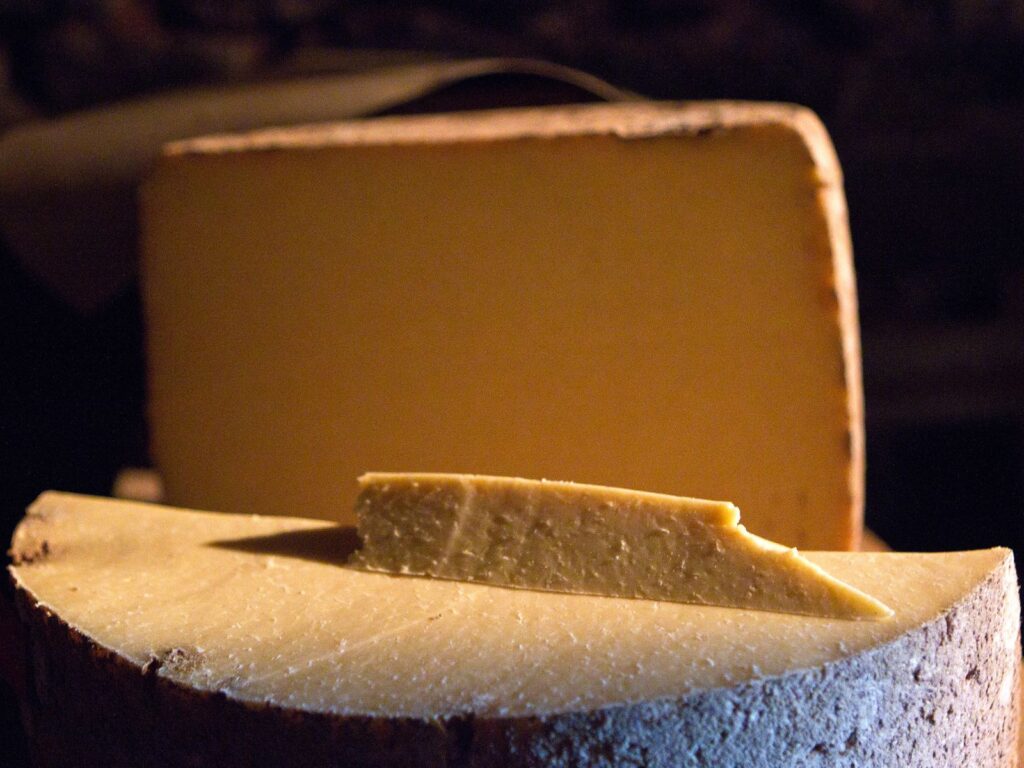
What is Salers?
Salers cheese is a type of pressed uncooked cheese that originated in the Auvergne region of France. It is made from the milk of Salers cows, which are a breed of cattle that are known for their high-quality milk. Undoubtedly, the cheese is renowned for its rich and nutty flavour. And it has been enjoyed for generations by cheese lovers all over the world.
How is Salers made?
Salers cheese is made from raw, unpasteurized milk that has been collected from Salers cows. The cheesemaker starts by gently warming up their milk and mixing in rennet. Consequently, the rennet curdles the milk and separates it into solids (curds) and liquids (whey). Then, they place the curds into moulds to drain and solidify.
Once the curds have formed into a solid cheese, they are placed into a saltwater brine, which helps to preserve the cheese and give it its characteristic salty flavour. After a few days in the brine, the cheese is removed and left to dry. Afterwards, an affineur will age each wheel for several months. During this time, they regularly turn and wipe the cheeses to ensure that it develops a uniform texture and flavour.
Flavour profile
When it comes to taste, Salers cheese has a rich and nutty flavour, with hints of grass and hay. The cheese is slightly salty, with a firm texture that crumbles easily. While some people describe the flavour of Salers cheese as being similar to that of a mature Cheddar. However, this cheese is much drier and has a more distinct flavour than its British counterpart.
Serving guide
As for pairings, you will want to enjoy Salers cheese with a full-bodied red wine, such as a robust Syrah or a bold Cabernet Sauvignon. Furthermore, the cheese is great with beers such as a Dark Ale or a Stout. Additionally, Salers cheese can be paired with nuts and fruit, such as walnuts, figs, and dried apricots. Finally, this French classic cheese is also delicious when used in cooking, and can be grated over pasta dishes, soups, and stews.
Thank you for reading
Thank you for reading this post about yet another amazing artisanal cheese. Have you tried this cheese before? Drop us a comment below with your thoughts.
If you enjoy learning about new cheeses, you can subscribe to our newsletter below. You will hear from us about once a week as we share new cheese profiles with you.
Finally, keep scrolling to find some more cheeses and recipes that have been recommended for you. Keep it cheesy!
